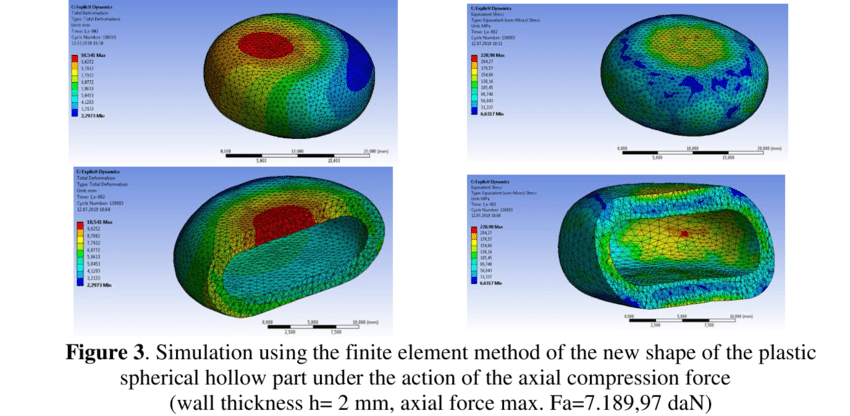Researchers from the Gheorghe Asachi Technical University, Romania have released a study investigating the mechanical behaviour of 3D printed parts under axial compression. A set of hollow PLA spheres were additively manufactured with varying print parameters before being subjected to a comprehensive mechanical testing regime, revealing the influence of temperature, print speed, and part wall thickness on the mechanical properties of the spheres.

Spherical joints and couplings
Spherical parts are typically found at the intersection points of other components in a mechanical system. This includes bearings which reduce frictional forces between moving parts. It also encapsulates spherical joints, which we might find in a robotic arm, enabling rotational freedom in a number of axes.
These spherical couplings tend to be made of metal but the authors of the study were interested in evaluating the usefulness of plastic for the application. Particularly, plastic used with the additive manufacturing process as the manufacturing method itself can have a major effect on the part’s surface roughness, surface layer properties, and material homogeneity. With the aim of better understanding the mechanical properties, compressive behaviour, and elasticity of such a 3D printed part, the team got to work.
3D printing hollow spheres
A set of nine hollow spherical samples were printed in silver metallic PLA on an Ultimaker 2+ 3D printer. Each of the samples had its own unique combination of four print parameters: wall thickness, print speed, cooling rate, and plate temperature. Before the researchers commenced any real mechanical testing, they ran a finite element analysis simulation (a method of estimating deformation in a part) on each of the spheres. This served to offer some preliminary data for the researchers which they could then compare to their actual measurements later on.

The physical testing of the parts involved crushing them until they plastically deformed and eventually fractured (think Hydraulic Press Channel). The forces at each stage of deformation were recorded and compared to the values calculated in the simulations. The researchers found that their simulations were remarkably similar to the actual end results of the experiments, meaning the considerations they formulated when analyzing the deformation conditions were correct.
As for the actual results, the printing plate temperature parameter had the greatest influence on the elasticity of the parts. Similarly, as part wall thickness increased, so did the elasticity of the spheres. The team hopes to extend the research and at some point investigate the effects of other factors on the behaviour of parts under axial compression.

Further details of the study can be found in the paper titled ‘Mechanical Behaviour of 3D Printed PLA Hollow Spherical Parts Under Axial Compression’. It is co-authored by Adelina Hrituc, Andrei Mihalache, Marian Mares, Margareta Coteata, Oana Dodun, Gheorghe Nagit, and Laurentiu Slatineanu.
There are a great number of factors that can affect the mechanical properties of a material or 3D printed part. Earlier this year, researchers from Greece determined the effects of recycling on the mechanical properties of ABS filament. Surprisingly, the mechanical properties were found to improve by about 30% until the fifth stage of recycling, after which they deteriorated. Elsewhere, in Slovakia, researchers have developed a set of new “extremely strong” hybrid PETG composites for FFF 3D printing. By reinforcing PETG filament with expanded graphite and carbon fiber, the team was able to enhance the mechanical and thermal properties of the base PETG material.
The nominations for the 2020 3D Printing Industry Awards are now open. Who do you think should make the shortlists for this year’s show? Have your say now.
Subscribe to the 3D Printing Industry newsletter for the latest news in additive manufacturing. You can also stay connected by following us on Twitter and liking us on Facebook.
Looking for a career in additive manufacturing? Visit 3D Printing Jobs for a selection of roles in the industry.
Featured image shows finite element analysis simulation depicting the expected behaviour of a sphere. Image via GATU.


